After the April War of 6−18th, 1941, the Germans, Italians, Bulgarians and Hungarians occupied and divided the territory of the Kingdom of Yugoslavia into several parts. The Germans annexed the North Slovenia and put under their direct occupation the Yugoslav part of Banat and the Central Serbia with Kosovska Mitrovica. The Italians occupied the South Slovenia, established their marionette regime in Montenegro and annexed the Gulf of Boka Kotorska, parts of Konavli and Dalmatia. The Hungarians annexed Prekomurje, Baranja and Bachka. The Bulgarians occupied the East and Central Vardar Macedonia and the South-East Serbia. The Italians established their own marionette state of a Greater Albania with the East Montenegro, Kosovo (without its northern part that was occupied by the Germans for economic reasons) and the West Vardar Macedonia.[i]
However, the most important post-April War creation on the territory of ex-Kingdom of Yugoslavia was an Independent State of Croatia that was officially proclaimed on April 10th, 1941. It was composed by Croatia, Slavonia, parts of Dalmatia, Bosnia-Herzegovina and the East Srem (today in Serbia). The official name of the state was Neovisna država Hrvatska (the NDH) with a capital in Zagreb. It had 6.663.157 inhabitants according to the last pre-war census and covered the territory of 102.725 sq. km.[ii] According to the Rome Treaties from May 1941 the NDH gave to its patron Italy Kastav and Sushak with its hinterland, the islands of Krk and Rab, the North Dalmatian and parts of the Central Dalmatian littoral, the biggest part of the Adriatic islands and a part of Konavle. Therefore, Italy realized all paragraphs of the secret London Treaty signed between Italy and the Entente in April 1915. Nevertheless, after the capitulation of Italy on September 8th, 1943 the NDH tried to incorporate parts of Dalmatia but did not succeed to establish a real state-administrative sovereignty over these territories due to the German obstruction.
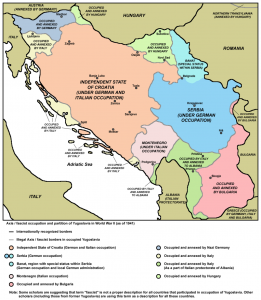
The collapse of the Kingdom of Yugoslavia in 1941 was very rapid for at least three reasons:
- The country was not prepared for the war at all.
- The aggressors were much stronger from all points of view.
- The Croat treachery during the April War.
As a consequence of the military defeat, some 375.000 officers and soldiers of the Yugoslav army, but only of the Serb origin, fell into the Axis hands and became the prisoners of war in Germany. Nevertheless, on the territory of the NDH fanatical Serb-hating Croat Nazi-Ustashi were on the loose, perpetrating appalling massacres which very soon led to the Serb uprising and the loss of de facto control over the large areas.[iii] Destruction of the Kingdom of Yugoslavia, her occupation followed by the creation of a Greater NDH and massacres of its Orthodox and Jewish population were the historical triumph of Vatican and the Roman Catholic separatism.[iv]
After the April War in 1941 and the occupation of the Kingdom of Yugoslavia, as a leading pre-war Croat politician Vladimir Vladko Machek refused the Italian and German offer to become a head of the new quisling state of the NDH, the Croat Nazi-Ustashi leader, Ante Pavelic was brought back from Italy to lead this Independent State of Croatia. V. Machek himself clearly noted that the declaration of the NDH on April 10th 1941 was greeted with “a wave of enthusiasm” in Zagreb “not unlike that which had swept through the town in 1918 when the ties with Hungary were severed”.[v] The territory of NDH, as the rest of ex-Kingdom of Yugoslavia was divided between the German and Italian zones of influence and administration. When the Nazi-Ustashi Poglavnik (Führer) Ante Pavelic was returned from Italy to be appointed by the Italians as the leader of the NDH he came with some 300 supporters, but it turned out soon that he got a silent massive support by the ethnic Croats in the country. The Ustashi movement, established in 1929, found their ideological roots in the mid-19 century chauvinistic Roman-Catholic and Serbophobic ideologist Ante Starchevic – a founder of nationalistic Croat Party of Rights. A. Starchevic was exactly the person who formulated within the ideological framework of a Greater Croatia the Nazi-Ustashi-committed brutal and sadistic genocide against the Serbs during the WWII on the territory of the NDH.[vi]
The Italian installation of the Ustashi regime in the NDH meant nothing else than the Serbophobic Roman Catholic fanatics were now in power in a state where the law and order were framed on the pattern of the Nazi Germany’s anti-Jewish law and order – in a state whose population was barely 50 per cent Croat followed by 12 per cent Muslims (today Bosniaks) and at least one-third the Serbs whose destiny was to disappear by these or other means. The Bosnian-Herzegovinian Muslims officially were declared by the Ustashi regime as the “flower of the Croat nation”, i.e., as the ethnic Croats of the Islamic faith and as such the Bosniaks took a full participation in the Croat-run four years sadistic genocide against the Orthodox Serbs. During the war the most infamous Bosnian-Herzegovinian Muslim military unit was the SS Hanjar Division that was inspected by H. Himler himself. However, differently to the Muslim case in the NDH, the implacable extreme Serbophobic regime in Zagreb sought to exterminate all Serbs on the territory of the NDH according to the self-proclaimed principle by the NDH Minister of Education, Mile Budak on June 22nd, 1941: one third to kill, one third to expel and one third to convert to the Roman Catholicizm (to Croatize).[vii] The first laws in the NDH were to ban the Cyrilic script and to outlaw the Serbs who had to wear a special sign on their cloths that they are the Orthodox.[viii] The Serb Orthodox churches and schools were firstly closed and later destroyed. The Ustashi organized bloody massacres of the Serbs even inside the churches (in Glina in August 1941) or the schools (in Prebilovci in August 1941). Deportations of the Serbs to Serbia were part of the Ustashi-designed “Final Solution” of the Serb Question in the NDH – in 1945 there were around 400.000 Serb refugees in Serbia from the NDH.
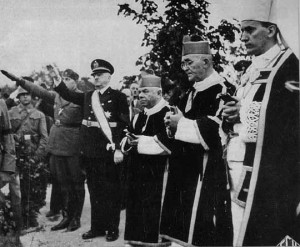
We do not have right to forget that the essence of the NDH was that this state was the first Vatican-sponsored state in the Balkans. The Roman Catholic Church in the NDH put itself to the full exposal to the new Nazi Roman Catholic Ustashi authorities and even participated directly in the massacres of the Orthodox Serbs.[ix] For the Roman Catholic clergy in the NDH one of the most controversial demands of the Ustashi authorities was the conversion of the Serbs to the Roman Catholicism. In principle, the clergy was uncomfortable with this policy of direct conversion, without the converts first accepting the Union act (recognizing the Pope as a head of the church but keeping Slavonic liturgy). Nevertheless, the Roman Catholic Church in the NDH accepted a forced conversion of the Serbs under the formal pretext of saving their lives. It is estimated that a total number of converted Orthodox Serbs in the NDH was around 300.000, but it is recorded also that many of already converted Serbs became anyway murdered by the Ustashi detachments. In the spring of 1943 the Ustashi government created a Croatian Orthodox Church that was headed by Bishop Hermogen – the Russian Orthodox priest who escaped from the USSR.
The first organized massive massacre of the Serbs in the NDH was committed on April 28th, 1941 when 187 Serbs from the village of Gudovac and its surroundings were massacred. Among the most brutal and sadistic massacres at the beginning of the NDH was in Glina on August 5th, 1941 when some 1.200 Orthodox Serbs dressed in their Sunday best were called to the local Orthodox church from surrounding villages to be converted into the Roman Catholicism. However, instead of the conversion they were locked inside the church and slaughtered by knives. In August 1941 occurred and the Prebilovci massacre of the local Serbs in the East Herzegovina including and the children in the village school. A report on this event by the local Italian commander to Mussolini is very sensitive and anti-Catholic as the commander noticed that after the Prebilovci massacre is shameful to be a Roman Catholic. The organized Ustashi genocide against the Serbs very soon became rapid and efficient that according to the U.S. official reports up to August 1942 there were some 600.000 killed people in the NDH, overwhelming majority of them the Serbs.[x] The massacres of Croat-Muslim Ustashi forces were to such extent that even Adolf Hitler was forced to personally intervene in this case in order to restrain the Ustashi barbarism. It is also recorded that the German troops were in some cases in Bosnia-Herzegovina opening fire on the Ustashi solders in order to save the lives of the Serbs. That was a fact that the Serbs and the Jews were fleeing from the German to the Italian occupation zone of Yugoslavia for the very reason as the Italians protected them from the Ustashi knives.[xi]
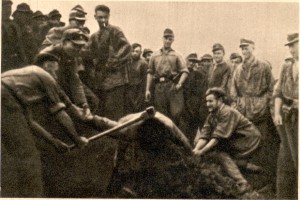
In the attempt to finally solve the Serb Question westward the Drina River, the Ustashi government established a network of death camps among all Jasenovac (a Yugoslav Auschwitz) nearby the Sava River on the very border with Bosnia-Herzegovina became the most infamous in which perished around 700.000 people among them 500.000 the Serbs. The extermination techniques included a slaughtering of the prisoners by a special type of knife known as the Srbosjek (a Slaughterer of the Serbs) made in the Solingen factory in Germany under the Ustashi design or making the hand-washing soaps of alive boiled human bodies sold in the shops in Zagreb. The evidences of extermination of the Serbs were sent by the local executors to Zagreb and from Zagreb later to Vatican. The most enduring of this genocide is for sure the scene described by the Italian journalist and writer Curzio Malaparte in his book Kaputt. This book is account of his wartime experiences as a war correspondent. Therefore, several months after the NDH became proclaimed Malaparte went to make an interview with Ante Pavelic – a head of the state and a leader of the Ustashi movement. On this occasion he was joined by the Italian minister in Zagreb, Raffaele Casertino. What he wrote as a witness is:
While he spoke, I gazed at a wicker basket on the Poglavnik’s desk. The lid was raised and the basket seemed to be filled with mussels, or shelled oysters – as they are occasionally displayed in the windows of Fornum and Mason in Piccadilly in London. Casertano looked at me and winked, “Would you like a nice oyster stew?” “Are they Dalmatian oysters?” I asked the Poglavnik. Ante Pavelic removed the lid from the basket and revealed the mussels, that slimy and jelly-like mass, and he said smiling, with that tired good-natured smile of his, “It is a present from my loyal Ustashis. Forty pounds of human eyes.”[xii]
The NDH was internationally recognized by Germany, Italy, Slovakia, Hungary, Romania, Japan, Spain, National China, Finland, Denmark and Manchuria. It existed from April 10th, 1941 to May 15th, 1945. In the other words, the NDH existed a whole week after the German capitulation as the last Nazi state in Europe. After the war a new communist authorities in Yugoslavia, led by Josip Broz Tito of the Croat and Slovenian origin, did everything to eliminate the evidences of the Croat-Muslim Magnum Crimen against the Serbs during the war. A most notorious case happened with the death camp of Jasenovac that was totally demolished. Very soon after the war simply nothing left as an evidence of the 9th Circle of Dante’s Hell followed by destruction of the written and other documents. After 1990 a new nationalistic government of Franjo Tudjman in Zagreb did everything to disgracefully whitewash a history of the NDH directly supported by the official scientific institutions in Croatia. In this context, one of the most shameful “scientific” publications was published in several languages by the Croatian Institute of History in 1997.[xiii]
Today, it is much more reliable to consult the German and Italian sources on the NDH than the archival material from the Yugoslav archives. Therefore, the most useful reports to Berlin and Rome are by the German and Italian embassies in Zagreb, German General Artur von Flebs, German dr. Josef Fessl, German Wilhelm Hetl, German Lothar Rendulitz, German Herman Neubacher, German dr. Josef Matl, Italian General Pitzio Biroli, Italian General Mario Roata, Italian Colonel Guisepe Angelini, Italian Enzo Cataldi or Italian historian Salvatore Loi who published an extremely valuable anthology of the Italian documents and reports on the Italian military operations in Yugoslavia in 1978. S. Loi’s account on the NDH is probably one of the most relevant and realistic. According to him, the NDH became transformed into the lake of Serb blood until the mid-August 1941. The Croat-Muslim genocide against the Serbs was, according to the same author, the most barbaric part of the WWII, even more barbaric than the holocaust against the Jews.[xiv]
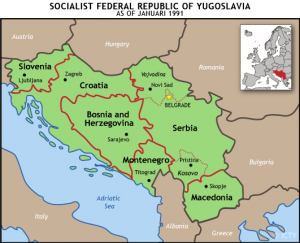 Subsequently, it is not of any surprise that the U.S. President Th. F. D. Roosevelt told in 1944 that after the war the Croats as a nation has no any right to their own national state as they showed to be the animals during the war. For such nation as the Croats were, Roosevelt anticipated an international monitoring but not any kind of Croatia. However, after the war a Croat led the Communist Party of Yugoslavia created even bigger Croatia within Yugoslavia than it was before the war reducing Serbia into the borders before the Balkan Wars of 1912−1913. Finally, the Croats backed by Vatican and Germany continued a policy of the NDH in 1991 and in essence succeeded as today in Croatia there are only up to 4 per cents of the Serbs in comparison to 25 per cents in 1940 or 12 per cents in 1990.
Subsequently, it is not of any surprise that the U.S. President Th. F. D. Roosevelt told in 1944 that after the war the Croats as a nation has no any right to their own national state as they showed to be the animals during the war. For such nation as the Croats were, Roosevelt anticipated an international monitoring but not any kind of Croatia. However, after the war a Croat led the Communist Party of Yugoslavia created even bigger Croatia within Yugoslavia than it was before the war reducing Serbia into the borders before the Balkan Wars of 1912−1913. Finally, the Croats backed by Vatican and Germany continued a policy of the NDH in 1991 and in essence succeeded as today in Croatia there are only up to 4 per cents of the Serbs in comparison to 25 per cents in 1940 or 12 per cents in 1990.
[i] B. Petranović, Istorija Jugoslavije 1918−1945. Druga knjiga: Narodnooslobodilački rat i revolucija 1941−1945, Beograd: NOLIT, 1988, 25−51.
[ii] S. Srkulj, J. Lučić, Hrvatska povijest u dvadeset pet karata. Prošireno i dopunjeno izdanje, Zagreb: Hrvatski informativni centar, 1996, 105.
[iii] T. Judah, The Serbs. History, Myth and the Destruction of Yugoslavia, New Haven−London, 1997, 117.
[iv] М. Екмечић, Дуго кретање између клања и орања. Историја Срба у Новом веку (1492−1992). Треће, допуњено издање, Београд: Евро-Ђунти, 2010, 438.
[v] V. Maček, In the Struggle for Freedom, London, 1957, 230.
[vi] On this issue, see more in [В. Ђ. Крестић, Геноцидом до велике Хрватске. Друго допуњено издање, Јагодина: Гамбит, 2002].
[vii] According to Hrvatski narod – official NDH newspaper, dated on June 26th, 1941.
[viii] ХД Хрватска држава геноцида, Двери српске. Часопис за националну културу и друштвена питања, Год. XIII, број 47−50, Београд, 2011, 24−31.
[ix] V. Novak, Magnum Crimen. Pola vijeka klerikalizma u Hrvatskoj, Zagreb, 1948−Beograd 1986; V. Dedijer, Vatikan i Jasenovac, Beograd: Rad, 1987; M. A. Ривели, Надбискуп геноцида. Монсињор Степинац, Ватикан и усташка диктатура у Хрватској, 1941−1945, Никшић: Јасен, 1999; Л. Лукајић, Фратри и усташе кољу. Злочинци и сведоци. Покољ Срба у селима код Бања Луке Дракулићу, Шарговцу и Мотикама 7 фебруара и Пискавици и Ивањској 5 и 12 фебруара 1942. године, Београд: Фонд за истраживање геноцида, 2005.
[x] Р. Л. Кнежевић, Ж. Л. Кнежевић, Слобода или смрт, Сијетл, 1981, 44.
[xi] O. Talpo, Dalmazia: Una cronaca per la storia (1941), Roma, 1985. This book is of the crucial importance for the reconstruction of the Croat-Muslim massacres of the Serbs as it contains the large number of the Italian military and other documents from the Italian archives. See more on this issue in [S. Avramov, Genocid in Jugoslavija, Beograd, 1995].
[xii] C. Malaparte, Kaputt, Evanson IL: Northwestern University Press, 1997, 266; B. J. Fišer (priredio), Balkanski diktatori. Diktatori i autoritarni vladari jugoistočne Evrope, Beograd: IPS−IP Prosveta, 2009, 229.
[xiii] V. Žerjavić, Population Losses in Yugoslavia 1941−1945, Zagreb: Dom i Svijet−Hrvatski institut za povijest, 1997.
[xiv] М. Екмечић, Дуго кретање између клања и орања. Историја Срба у Новом веку (1492−1992). Треће, допуњено издање, Београд: Евро-Ђунти, 2010, 445.
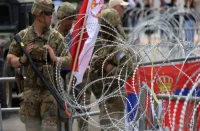
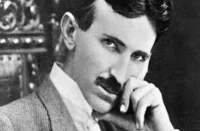
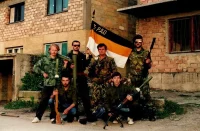











One more excellent article by Mr. Sotirovic. In Italian language there is a very documentary book by Aurelio Rivelli, „L’arcivescovo del genocidio”, Milano, 1999 about Alojzije Stepinac – a Archbishop of Croatia at the time of Independent State of Croatia. The book clearly presents direct connections between Ustashi regime in Zagreb and the Roman Catholic Church in NDH.
x
Letter of Alessandro Lusano to Benito Mussolini in August 1941 about Croat massacre of Serb civilians in Prebilovci (Herzegovina). Unfortunately, I do not have English translation just translation from Italian to Serb:
„Дуче! Моја безгранична оданост према Вама ми, надам се, даје за право да, у нечему, одступим од строгог војничког протокола. Зато и журим да Вам опишем један догађај којему сам, уназад три седмице, лично присуствовао.
Обилазећи среска места Столац, Чапљину и Љубиње (између 60 и 130 km северно од Дубровника) – сазнам од наших обавештајних официра да су Павелићеве усташе, претходног дана, починиле неки злочин у једном селу (Пребиловци), и да ће, кад се то прочује, околни Срби поново да се узнемире.
Недостају ми речи да опишем оно што сам тамо затекао. У великој школској учионици, затекао сам заклану учитељицу и 120 њених ученика! Ниједно дете није било старије од 12 година! Злочин је неумесна и невина реч – то је превазилазило свако лудило! Многима су одсекли главе и поређали их по ђачким клупама. Из распорених утроба усташе су извукле црева и, као новогодишње врпце, растегли их испод плафона и ексерима укуцали у зидове! Рој мува и несношљив смрад нису дозвољавали да се ту дуже задржимо. Приметио сам начети џак соли у ћошку и згрануто установио да су их клали полако, солећи им вратове! И, таман кад смо одлазили, у задњој клупи се зачуло дечје кркљање. Пошаљем двојицу војника да виде шта је. Изнели су једног ђака, још је био у животу, дисао је са напола пресеченим гркљаном! Својим колима одвезем то јадно дете у нашу војну болницу, повратимо га свести и од њега сазнамо пуну истину о трагедији.
Злочинци су најпре, на смену, силовали учитељицу Српкињу (име јој је Стана Арнаутовић) и онда је, пред децом, убили. Силовали су и девојчице од осам година. За све то време, певао је силом доведени оркестар Цигана и ударао у тамбуре!
На вечну срамоту наше, римске цркве – и један божји човек, један жупник, у свему томе је учествовао! Дечак кога смо спасили, брзо се опоравио. И чим је рана зарасла, нашом непажњом побегао је из болнице и отишао у своје село, да тражи родбину. Послали смо патролу за њим, али узалуд: нашли су га на прагу куће закланог! Од хиљаду и нешто душа, у селу више нема никога! Истога дана (то смо открили касније) кад је извршен злочин у школи, усташе су похватале још 700 становника села Пребиловци и све их бацили у јаму или на животињски начин на путу до јаме побили. Спасило се само око 300 мушкараца: једино је њима успело да пробију усташки обруч око села и да побегну у планину! Тих 300 преживелих јаче је од најелитније Павелићеве дивизије. Све што су имали да изгубе, они су изгубили! Децу, жене, мајке, сестре, куће, имовину. Чак су и страха од смрти ослобођени. Смисао њиховог живота је једино у освети, у страшној освети њих је, у неку руку, и стид што су преживели! А таквих села, као што су Пребиловци, пуна је Херцеговина, Босна, Лика, Далмација.
Покољи Срба су достигли такве размере да су, у тим крајевима, загађени и многи водени извори. Из једног врела у Поповом Пољу, недалеко од јаме у коју је бачено 4.000 Срба, избијала је црвенкаста вода, лично сам се у то уверио! На савест Италије и наше културе пашће неизбрисива мрља, ако се, док је време, не дистанцирамо од усташа и не спречимо да се нама припише да подржавамо безумље!“
Magnum Crimen The Book
Magnum Crimen the book about clericalism in Croatia from the end of 19th century until the end of the Second World War.
The book, whose full title is Magnum crimen – pola vijeka klerikalizma u Hrvatskoj (The Great Crime – a half-century of clericalism in Croatia), was written by a former Catholic priest and professor and historian at Belgrade University, Viktor Novak (1889–1977). The book was first published in Zagreb in 1948.
Immediately after the book was published, the Vatican Curia placed this book on the Index Librorum Prohibitorum (English: List of Prohibited Books) and pronounced anathema against the author.
Background
Novak wrote a trilogy, of which the last part was Magnum crimen (the first two parts were the Magnum tempus and the Magnum sacerdos). A Croat by birth, he has been, since 1924, active among the Serbs. He has held the Chair of Croat History, which was founded at the University of Belgrade in order to promote mutual understanding between the two kindred peoples. One of the determining factors in his life was his visit to Rome before 1914 and his research in the Vatican Archives. As a medievalist he came into a close contact with problems of modern religious life and took lively interest in relations between the Vatican and Catholic Croats.
Observing the Roman Catholic Church activities in Yugoslavia for more than fifty years, Novak concluded that this Church replaced the idea of service to God with service to the Roman Curia, i.e., to the government of Roman Pontificate in the role of world leader. As a result of this idea, in the Kingdom of Yugoslavia, the Roman Catholic Church identified the Roman Catholicism to the Croatian nationhood which turned most of its priesthood into ardent Ustashe supporters.
Content
The book describes the activities of the Roman Catholic clergy in the Kingdom of Yugoslavia, including their intention and attempts to become above the state, to control the state and eventually the everyday lives of the common people. It has two distinct parts. The first part consists of fifteen chapters, covering the Roman Catholic clericalism from the end of the nineteenth and beginning of the 20th century in Austria-Hungary, then in the Kingdom of Yugoslavia. The second part, the last four chapters, covers the rise and fall of the Independent State of Croatia, and the active support of the Roman Catholic clergy.
The main doctrine of the Roman Catholic Church in the Kingdom of Yugoslavia was that (a) the clergy shall be paid by the state as state officials; (b) the state cannot have any control over the Church; (c) the Church has right to be fully involved in the political life of the Kingdom of Yugoslavia; (d) the Church doctrine/religious education shall be a part of primary and secondary school curricula; and that (e) the Roman Catholic Church curricula in the schools shall be obligatory to all pupils whose at least one parent is a Roman Catholic.
Josip Juraj Strossmayer’s ideas, of which the most important one was that serving God is equal to serving the people, created close relations between Croats and Serbs by introducing the Old Slavonic language as the liturgical language of the Roman Catholic Church in the Balkans and were aggressively suppressed by the Roman Catholic clergy in Croatia and Slovenia.
Ante Pavelić’s nationalism identified Roman Catholicism with the Croat nation, which was actively supported and interpreted by the clergy.
The second part of this book focuses on the establishment of the Independent State of Croatia, the active support of this state by the Roman Catholic clergy, and their involvement and support in the extermination and/or forceful conversion of the Serbs and extermination of the Jews and the Roma people.
Archbishop Aloysius Stepinac is portrayed in this book as an ardent Roman Catholic crusader who publicly endorsed the establishment of the Independent State of Croatia, acknowledged the Ustashe as Croatian patriots, defended it before the Roman Pope and was responsible for the racist attitude and behavior of his clergy.
http://www.magnumcrimen.org
P.S. The author of a book, Viktor Novak, is a Croat
Pingback: NDH: lost portrait of a Nazi state | Oriental Review | keesened's Blog
Wait, you call the Republic of Croatia “a legal Nazi republic” or “a republic that has changed” (to better) ? “Today, it is much more reliable to consult the German and Italian sources on the NDH than the archival material from the Yugoslav archives.” why then use Serbian and Croatian historical sources for this text?
To zadom
Both Italian and German sources are quite clear: the NDH was independent in its policy of inner affairs (committing genocide on Serbs) and criminal project by Vatican
The Catholic churches complicity in the horrors of the Ustashe shows another perversion of the church over the years. Pedophilia the most recent.